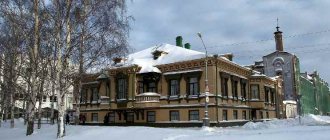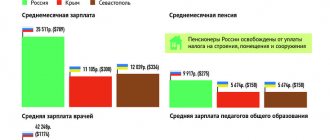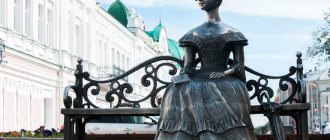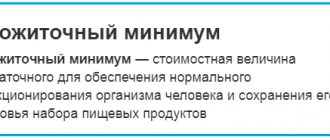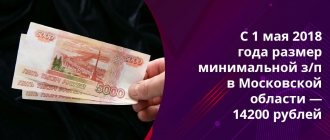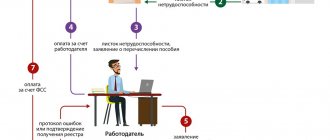Documentary confirmation.
Based on Government Decree No. 220-PP dated March 24, 2020, new subsistence minimum amounts have been established in the capital for the population of Moscow and Moscow Region.
The following minimum is defined:
- The living wage for a pensioner in Moscow is 11,952 rubles.
- For children under 18 years old – 14,440 rubles.
- For workers – 19,233 rubles.
On average, 16,843 rubles are allocated per capita.
According to the law, the minimum wage, starting from 01/01/2020, must not be lower than the minimum monthly wage, which was indicated for the 2nd quarter of 2022, i.e. not less than 12,130 rub. Based on it, all salaries, benefits, and insurance contributions are calculated.
Important! PM is the cost of products, things, payments (housing and communal services) necessary for human life.
This is not the actual amount that a person spends based on the realities of life, but an amount below which one cannot exist.
The PM value is revised annually quarterly.
Thus, in the 4th quarter of 2022, the monthly wage in Moscow was reduced and amounted to 16,843 per capita (previously for the 3rd quarter of 2022 it was 17,329 rubles), for workers - instead of 19,797 rubles. became 19,233 rubles.
For pensioners it was reduced to 11,952 (versus the previous 12,253 rubles), for children it was reduced from 14,889 rubles. up to 14,440 rub.
PM is needed to assess the standard of living of residents of the capital region when developing and implementing social programs, payments, determining the city budget for 2022 and other measures of social support for citizens.
What is the cost of living and what does it affect?
The subsistence minimum (LS) is the minimum amount of income a citizen needs to ensure life. The key points of the calculation methodology and the frequency of changes in the indicator are established by Federal Law No. 134-FZ of October 24, 1997.
Don't be poor, learn to manage your money and increase it.
More about the course
The subsistence minimum is calculated for the Russian Federation as a whole, as well as separately for each constituent entity of the Russian Federation. In addition, the amount is determined for different socio-demographic groups of the population:
- for the working population;
- pensioners;
- children.
The obtained indicators are needed for:
- Assessments of the standard of living in the Russian Federation and in each region of Russia in order to develop federal and regional social programs and implement social policy.
- Formation of the federal and regional budget.
- Justification of the minimum wage.
- Establishing the amount of scholarships, benefits and other social benefits.
More than 100 cool lessons, tests and exercises for brain development
Start developing
What does the cost of living affect:
- By the amount of child benefits, which will grow along with the growth of the monthly minimum wage. For example, for Putin’s payments or benefits for children under 3 years old, from 3 to 7 years old.
- For additional payments to social pensions.
- To classify a family or individual citizens as low-income. To do this, the average per capita income is compared with the subsistence minimum.
- For some regional payments. For example, in Moscow, young families for the 3rd and subsequent children can count on an amount of 10 minimum monthly payments.
13.01.2021
2 644
What do they give for the 3rd child: review of payments and benefits for parents with many children in 2022
Hello, friends! A large family in Russia is considered to be a family with three...
How does the minimum wage differ from the minimum wage: benefits by category.
The minimum is always slightly higher than the minimum wage, but they have long wanted to equalize the indicators.
Earning 11,280 rubles in Moscow. it is impossible to cover the costs of utilities, food, necessary clothing, hygiene items, etc.
When calculating pensions, they are guided by the minimum amount of residence in the region. If a pensioner has less payments, then, according to social services, he is paid extra monthly.
If the average per capita family income is less than 2 times the minimum monthly wage, citizens have the right to payments from the state at the birth of their first child.
An application for new maternity capital can be submitted immediately, but payments will begin as soon as the baby turns 3 years old.
Scholarships for students of universities and colleges are also based on the size of the minimum wage for the city of Moscow. If the income is less, then the student has the right to benefits in the form of partial compensation for utility bills.
PM affects the amount of vacation pay, unemployment benefits, and maternity benefits. If the inflation rate in a country does not change, then the size of the subsistence minimum will not increase.
Join the labor exchange through public services: Moscow 2020.
Bread, mayonnaise, water. What do students eat and how long do they live in Moscow?
For applicants and their parents, July is the hottest time, the time of admission to universities. Some are just submitting documents, others are already passing entrance examinations. Applicants and their parents have one thing in common - everyone thinks how much money a future student will need to live independently in Moscow. A FederalPress correspondent asked students of the most popular and prestigious universities in the capital what their monthly budget is and how much they spend. Details are in our material.
Among the agency's interlocutors were students of Moscow State University. M.V. Lomonosov, National Research University Higher School of Economics (HSE), Financial University under the Government of the Russian Federation, Moscow State University of Geodesy and Cartography (MIIGAiK) and the All-Russian State Institute of Cinematography named after S.A. Gerasimova (VGIK).
Dormitory
A student's living wage greatly depends on whether he lives in a dormitory or with his parents. Dormitory residents should spend money not only on groceries, but also on household goods, such as detergents. In addition, the hostel only provides bed linen and, according to reviews, it is not of very good quality. Therefore, new students must buy everything from kitchen utensils to irons, and sometimes even shelves at Moscow State University on their own.
Oddly enough, the hostel fee hardly burdens the student’s pocket or the wallets of the parents. At Moscow State University in the summer, students spend only 109 rubles per place, and during school hours - up to 120 rubles per month.
At HSE, the cost of living in a dormitory is higher - from 670 to 830 rubles: rent increases depending on the time of year; during the holidays it is higher.
The Financial Academy provides housing for an even higher fee: 900 rubles per month for state employees and 1,450 rubles for children studying on a contract basis.
VGIK is at the peak of both cheapness and high cost: state employees pay about 70 rubles, contract employees – 3,700 rubles.
Nutrition
Students eat differently. Those whose dormitory is more like separate apartments for several people, as, for example, at the Higher School of Economics, prepare themselves.
At Moscow State University and the Financial Academy they are content with a shared kitchen on the floor, so the guys more often go to the canteens or use the multicooker in the room.
There are also those who are lucky enough to live with their parents. They usually don’t buy groceries themselves, but due to their busy schedules, they dine in the city and spend even more on food than their fellow students living in dormitories.
As our survey showed, canteens are the most popular way to get enough food. However, it turned out that they are not available everywhere. For example, not all buildings of the Higher School of Economics have their own catering facilities. The Faculty of Social Psychology has such a pleasure; a set lunch there costs 120 rubles, and in the world economy and world politics - 150 rubles. The dormitories are not equipped with canteens, but this is understandable - students there live in full-fledged apartments with all amenities.
At MSU, things are different with student canteens: they are available in every building. The cheapest is considered to be canteen No. 1 in the main building on the Lenin Hills, where the main dormitory of the university is located. You can have lunch here for about 150 rubles. In addition to this canteen, there are about 8-10 public catering establishments in the city hall, plus buffets and canteens in other buildings. In the same main building there are also shops, pharmacies, and travel agencies.
For comparison, in the center of Moscow, at the Institute of Asian and African Studies at Moscow State University, you can have lunch for 150 rubles, and at the journalism department for 180-200 rubles, depending on your personal choice. The MSU canteens in the dormitory of the Graduate and Intern House are breaking all records: they say that breakfast there will cost only 40 rubles, and lunch – the same 150 rubles.
At VGIK, a set lunch usually costs 150 rubles.
In MIIGAiK - 210 rubles.
The highest price is again set by the Financial Academy - from 300 rubles.
Those who usually cook themselves pay an average of 10,000 to 15,000 rubles per month for food. Guys who spend most of the day in the city and eat, except at home, in canteens and cafes, spend about 6,500 a month, plus almost 10,000 rubles for catering.
“At home” people, those who live with their parents, spend from 5,000 to 10,000 rubles a month on food. But they no longer eat only in university canteens, but also in cafes, often in fast foods. A lot of this goes into hanging out with friends.
Directions
A necessary expense, perhaps, for all children is payment for travel. The size of the budget depends on where you live.
HSE students travel from Odintsovo, and from there there are free university buses to Moscow. True, rarely - only three times a day. Therefore, most often, dorm residents have to pay 80 rubles for a trip on a regular bus or wait for a free bus to the train, which has a 50% discount for students from September 1 to June 15.
Those who are lucky enough to live in Moscow usually spend 630 rubles a month on travel: 250 rubles for ground transport within the city and 380 rubles for the metro. Travel costs more for residents of the Moscow region - about 3,000 rubles per month.
"Wishlist"
Modern students often suffer from additional expenses. Some buy cigarettes, others smoke hookah in a cafe. For a standard smoker, the cigarette budget is approximately 1,500 rubles.
Girls often visit beauty salons, which also costs a pretty penny: about 1000-1300 rubles for a manicure, pedicure, plus 2000 rubles for eyelash extensions, haircuts, etc.
Scholarship
All state-funded students have the opportunity to receive an academic scholarship for good and excellent academic achievements.
At the Financial Academy it is about 1,500 rubles.
At Moscow State University, the scholarship is 2,400 rubles in the first semester and up to 3,000 rubles in the next.
At HSE – 1199 rubles for the first module and from 1500 to 2200 rubles for subsequent ones. There are other types of scholarship support, but students can only apply for them under certain conditions. For example, if they have achievements in scientific activities.
Total
It turns out that students spend at least 10 thousand rubles a month on mandatory payments; with additional expenses, the amount increases to 15-20 thousand rubles. According to the guys, on holidays, when you need to buy gifts, another 3-10 thousand is added, depending on the mass of the celebration: whether you need to buy gifts for the whole family and friends or just the birthday boy.
Let us note that the official cost of living for a Muscovite based on the results of the first quarter of 2022 was 15,800 rubles. On average, students fit into this amount. Yet this is five times more than the student's highest academic scholarship. But you can also lose it if you get a C or a bad grade during the session. And then all that remains is to rely on the parents.
Photo: pixabay.com, FederalPress / Evgeniy Potorochin, Ksenia Virchenko
Living wage for Moscow.
According to the law adopted in Moscow on May 15, 2002 No. 23 “On the subsistence level in the city of Moscow,” the minimum wage is established so that a person can receive all social payments provided for citizens of different categories.
Of these in Moscow:
- Benefits for families at the birth of the first and subsequent children to stimulate the birth rate.
- One-time benefit for the adoption of a child.
- Child benefit (every month).
- Payments to single mothers (fathers).
- One-time payments to citizens of the capital who find themselves in difficult life situations.
The cost of living in Moscow for benefits (its amount) is taken into account when determining rights to scholarships, when registering to improve living conditions, providing free legal services, etc.
Important! The PM value in Moscow is calculated based on the results of the past quarter, in this case the 1st for 2022, and based on State Statistics data on the price level.
The application of the concept of PM comes into force from the moment of publication of information in official metropolitan publications (Moscow Government and Mayor.).
Minimum living wage in all regions, republics and territories of Russia for 2022
The table presents data on the minimum cost of living that is current for 2022 in all republics, regions, territories, autonomous okrugs and large cities of the Russian Federation. For more information, select your region.
- Altai region
- Amur region
- Arhangelsk region
- Astrakhan region
- Belgorod region
- Bryansk region
- Vladimir region
- Volgograd region
- Vologda Region
- Voronezh region
- Gorno-Altaisk and the Altai Republic
- Jewish Autonomous Region
- Transbaikal region
- Ivanovo region
- Irkutsk region
- Kabardino-Balkarian Republic
- Kaliningrad region
- Kaluga region
- Kamchatka Krai
- Karachay-Cherkess Republic
- Kemerovo region
- Kirov region
- Kostroma region
- Krasnodar region
- Krasnoyarsk region
- Kurgan region
- Kursk region
- Leningrad region
- Lipetsk region
- Magadan Region
- Moscow
- Moscow region
- Murmansk region
- Nenets Autonomous Okrug
- Nizhny Novgorod Region
- Novgorod region
- Novosibirsk region
- Omsk region
- Orenburg region
- Oryol Region
- Penza region
- Perm region
- Primorsky Krai
- Pskov region
- Republic of Adygea
- Republic of Bashkortostan
- The Republic of Buryatia
- The Republic of Dagestan
- The Republic of Ingushetia
- Republic of Kalmykia
- Republic of Karelia
- Komi Republic
- Republic of Crimea
- Mari El Republic
- The Republic of Mordovia
- Republic of Sakha (Yakutia)
- Republic of North Ossetia-Alania
- Republic of Tatarstan
- Tyva Republic
- Republic of Udmurtia
- The Republic of Khakassia
- Republic of Chechnya
- Chuvash Republic
- Rostov region
- Ryazan Oblast
- Samara Region
- Saint Petersburg
- Saratov region
- Sakhalin region
- Sverdlovsk region
- Sevastopol
- Smolensk region
- Stavropol region
- Tambov Region
- Tver region
- Tomsk region
- Tula region
- Tyumen region
- Ulyanovsk region
- Khabarovsk region
- Khanty-Mansiysk Autonomous Okrug
- Chelyabinsk region
- Chukotka Autonomous Okrug
- Yamalo-Nenets Autonomous Okrug
- Yaroslavl region
We pay utilities, buy food, clothing and sometimes medicine. And that's just the basics. But people still need household and digital equipment and recreation. The question of how much money is needed for a normal life can be called one of the most important in society. Therefore, a living wage was introduced.
The living wage is the minimum income that is necessary to maintain a certain standard of living. It is calculated for the previous quarter (three months) and is needed more for statistics. Other indicators will depend on its value - the minimum wage, scholarships, pensions, fines.
How is the cost of living calculated in the constituent entities of the Russian Federation?
The value of PM differs not only by groups of citizens - employees of state and non-state (private) organizations, which include students, pensioners and children, but also by region.
The described indicator is divided into two parts: food and non-food.
To calculate the first part, food, the so-called consumer basket is used - this is the minimum set of products to support a full life. Federal law establishes a list of products and the volume of consumption per year for each group of people. (potatoes - 100.4 kg, vegetables - 114 kg, fruits - 60 kg, fish - 18.5 kg, eggs - 210 pcs. and so on).
As for the second part, non-food (utility bills, expenses for transport, clothing and cultural recreation), it is equal to 50% of the food basket.
The fact that the cost of living in the constituent entities of the Russian Federation is different is precisely explained by unequal food prices. In addition, until 2022, its value was determined not only on the basis of calculating the cost of products included in the consumer basket, but now also depends on the median per capita income in the country.
